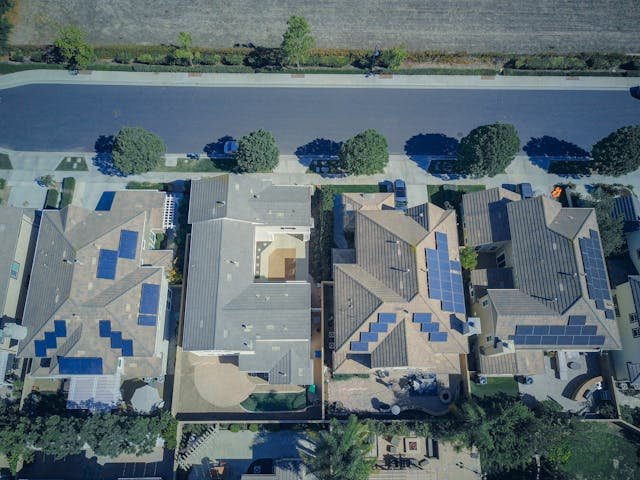Landscaping in Fayetteville, GA, like in any other place, has evolved over the years. In the past, landscaping was focused more on aesthetic appeal, but today, there’s a need to consider sustainability. Sustainable landscaping is an approach that seeks to create beautiful and functional landscapes while reducing the impact on the environment. Sustainable landscaping is not only good for the environment, but it’s also cost-effective, making it a win-win situation for homeowners. In this article, we will discuss how to design a sustainable landscape.
Understand Your Landscape
The first step in designing a sustainable landscape is to understand your landscape. You need to know the soil type, slope, and drainage pattern. This information will help you determine the best plants to use and where to place them. Understanding your landscape will also help you identify areas that require more attention and care.
Use Native Plants
These are plants that grow naturally in a particular area. You can create a sustainable landscape using native plants since they are acclimatized to the local climate and soil conditions, making them more resistant to pests and diseases. They also don’t require frequent watering and maintenance compared to non-native plants.
Plant Trees Strategically
Trees are an essential component of a sustainable landscape. They provide shade, reduce the urban heat island effect, and absorb carbon dioxide from the atmosphere. When planting trees, you need to consider the mature size of the tree and its location. Plant trees away from power lines and buildings to avoid future conflicts.
Use Water-Efficient Irrigation Systems
Water is a scarce resource, and it’s essential to use it efficiently in your landscape. Using water-efficient irrigation systems like drip irrigation and soaker hoses is a great way to conserve water. These systems deliver water directly to the plant’s roots, reducing water loss due to evaporation and runoff.
Use Organic Fertilizers
Chemical fertilizers can have a negative impact on the environment, and they’re not sustainable in the long run. Using organic fertilizers like compost and manure is a great way to provide your plants with the nutrients they need while reducing the impact on the environment. Organic fertilizers also improve soil health, which leads to healthier plants.
Use Mulch
Mulch is organic material that’s layered on top of the soil to retain moisture, regulate soil temperature, and smother weeds. Mulching is a great way to conserve water and reduce the need for herbicides in your landscape.
Incorporate Sustainable Hardscapes
Hardscapes are the non-living components of your landscape, like patios, walkways, and retaining walls. Use permeable materials like gravel and pavers that allow water to penetrate the soil. This reduces runoff and erosion, which conserves the environment.
Consider Wildlife Habitat
Creating a wildlife habitat in your landscape is a great way to promote biodiversity. Provide food, water, and shelter for wildlife by incorporating features like bird feeders, bird baths, and nesting boxes. Use native plants that attract pollinators like bees and butterflies.
Minimizing Chemical Usage
Chemical pesticides and fertilizers are harmful to the environment and can negatively impact human health. Sustainable landscaping practices involve minimizing the use of chemical pesticides and fertilizers by using organic alternatives and natural pest control methods.
Promoting Biodiversity
Biodiversity is essential for maintaining a healthy ecosystem. Sustainable landscaping practices involve promoting biodiversity by incorporating a variety of plants, trees, and shrubs that provide food and shelter for native wildlife.
Using Recycled Materials
Using recycled materials is another way to promote sustainability in landscaping. Recycled materials such as crushed concrete, mulch, and reclaimed wood can be used in hardscaping and landscaping projects, reducing waste and conserving resources.
Incorporating Edible Landscaping
Edible landscaping involves incorporating edible plants into the landscape design. This not only provides fresh, healthy produce but also reduces the carbon footprint of food transportation. Edible landscaping can be integrated into traditional landscape designs, creating an aesthetic and functional outdoor space.
Creating a Sustainable Lawn
Lawns are often associated with high water usage, chemical fertilizers, and pesticides. However, a sustainable lawn can be achieved by using drought-resistant grass varieties, reducing the size of the lawn, and using organic lawn care methods.
Maintenance
Maintaining a sustainable landscape requires ongoing care and maintenance. Regular pruning, weeding, and mulching are essential to keep your landscape healthy and beautiful. You should also inspect your irrigation system regularly to ensure it’s working efficiently. Consider using organic pest control methods instead of chemical pesticides.
Sustainable landscaping is an approach that seeks to create beautiful and functional landscapes while reducing the impact on the environment. Using native plants, planting trees strategically, using water-efficient irrigation systems, organic fertilizers, mulch, sustainable hardscapes, wildlife habitat, and maintenance
















